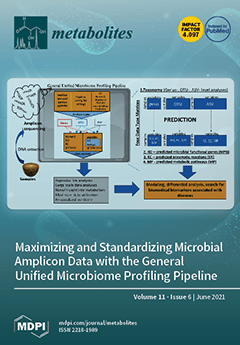Brassica juncea has great application potential in phytoremediation of cadmium (Cd)-contaminated soil because of its excellent Cd accumulating and high biomass. In this study, we compared the effects of Cd under 48 h and 7 d stress in roots of
Brassica juncea using metabolite profiling. The results showed that many metabolic pathways and metabolites in
Brassica juncea roots were altered significantly in response to Cd stress. We found that significant differences in levels of amino acids, organic acids, carbohydrates, lipids, flavonoids, alkaloids, and indoles were induced by Cd stress at different times, which played a pivotal role in the adaptation of
Brassica juncea roots to Cd stress. Meanwhile,
Brassica juncea roots could resist 48 h Cd stress by regulating the biosynthesis of amino acids, linoleic acid metabolism, aminoacyl-tRNA biosynthesis, glycerophospholipid metabolism, ABC transporters, arginine biosynthesis, valine, leucine and isoleucine biosynthesis, and alpha-linolenic acid metabolism; however, they regulated alpha-linolenic acid metabolism, glycerophospholipid metabolism, ABC transporters, and linoleic acid metabolism to resist 7 d Cd stress. A metabolomic expedition to the response of
Brassica juncea to Cd stress will help to comprehend its tolerance and accumulation mechanisms of Cd.
Full article






